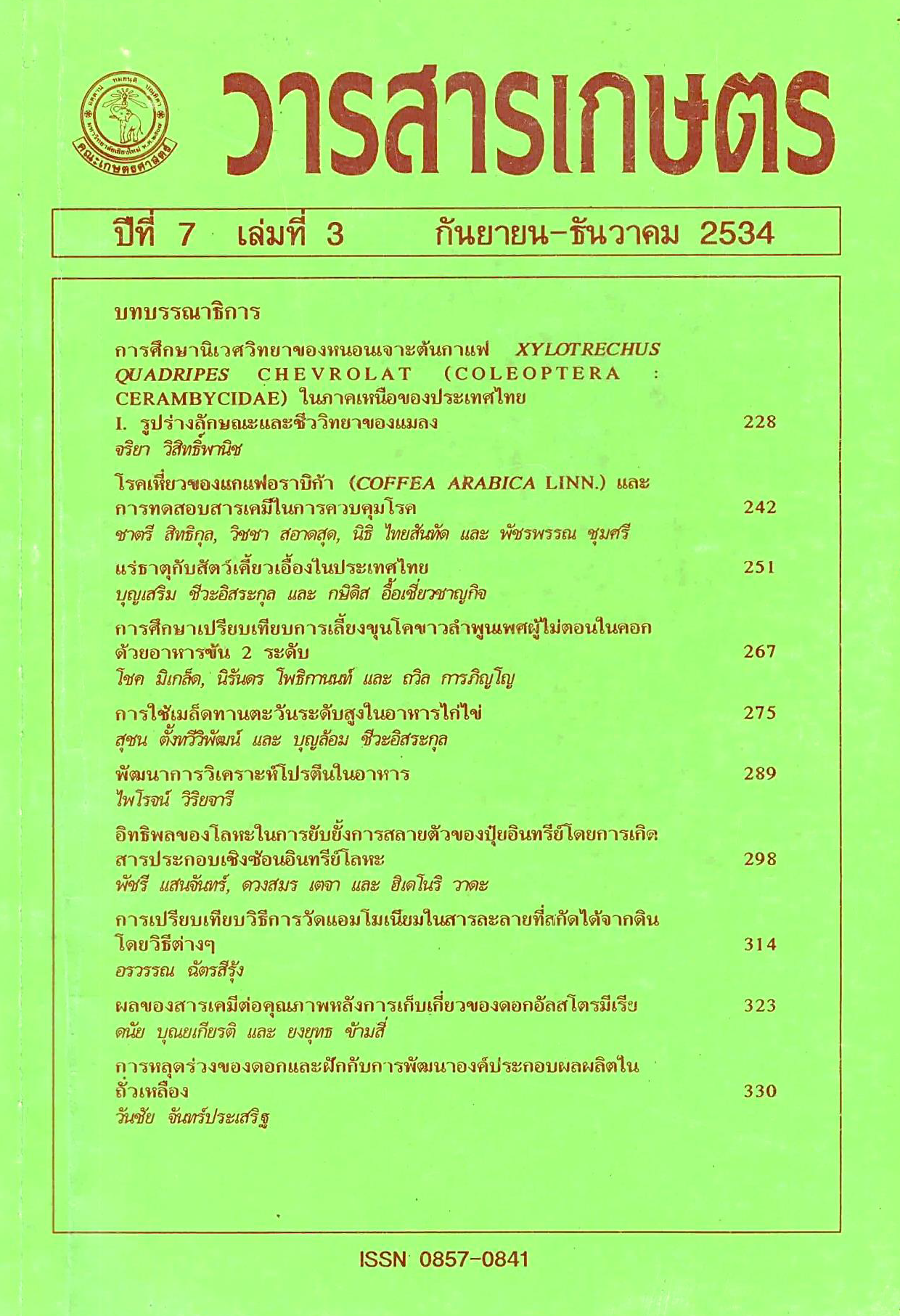DEVELOPMENT OF FOOD PROTEIN ANALYSIS
Main Article Content
Abstract
Kjeldahl method is usually well-known for food protein analysis. However, this method has a complex problem particularly in distillation and titration steps. The modified method development, therefore, using colorimetric method was investigated. It was found that it was accu- rate and not significant difference from the standard Kjeldahl method. In fact that Brand's traditional essence of chicken, pork meat and soya milk powder were composed of total nitrogen (1.156 ± 0.110%, 3.24 ± 0.18% and 5.57 ± 0.11% respectively) and protein (7.22 ± 0.68%, 20.23 ± 1.12% and 34.82 ± 0.72% respectively) by using micro-Kjeldahl method. On the other hand, the same samples using colorimetric method were found 1.081 ± 0.060%, 3.20 ± 0.11% and 5.56 ± 0.17% total nitrogen respectively and 6.76 ± 0.38%, 20.01 ± 0.71% and 34.76 ± 1.04% protein content respectively. Thus, it can be concluded that the colorimetric method could be used for food protein analysis as it was accurate, convenient and rapid method
Article Details
References
Braverman, J.B.S. (1963). Introduction to the Biochemistry of Foods. Elsevier Publishing Company, London.
Hans Neurath. (1976). The Protein. (3rd. ed.). Volume II. Academic Press.
King, R.D. (1978). Development of Food Analysis Technique. Applied Science Publishers, London. Mitchell, H.L. (1972). Microdetermination of nitrogen in plant tissues. J. Assoc. Office. Anal Chemists, 55: 1.
Pearson, D. (1976). The Chemical Analysis of Foods. Churchill Livingstone, London and New York. Pomeranz, Y. and Meloan, C.E. (1978). Food Analysis : Theory and Practice. AVI Publishing Company, Inc., Westport, Connecticut.
Wiriyacharee, P., and Koumroptum, J. (1985). Effect of catalysts and boric concentration on protein analysis. J. of Agriculture, 1(1): 72-84.
Walonick, D.S. (1987). Stat-Packets. Walonick Associates Inc., Minneapoils, M.N.

